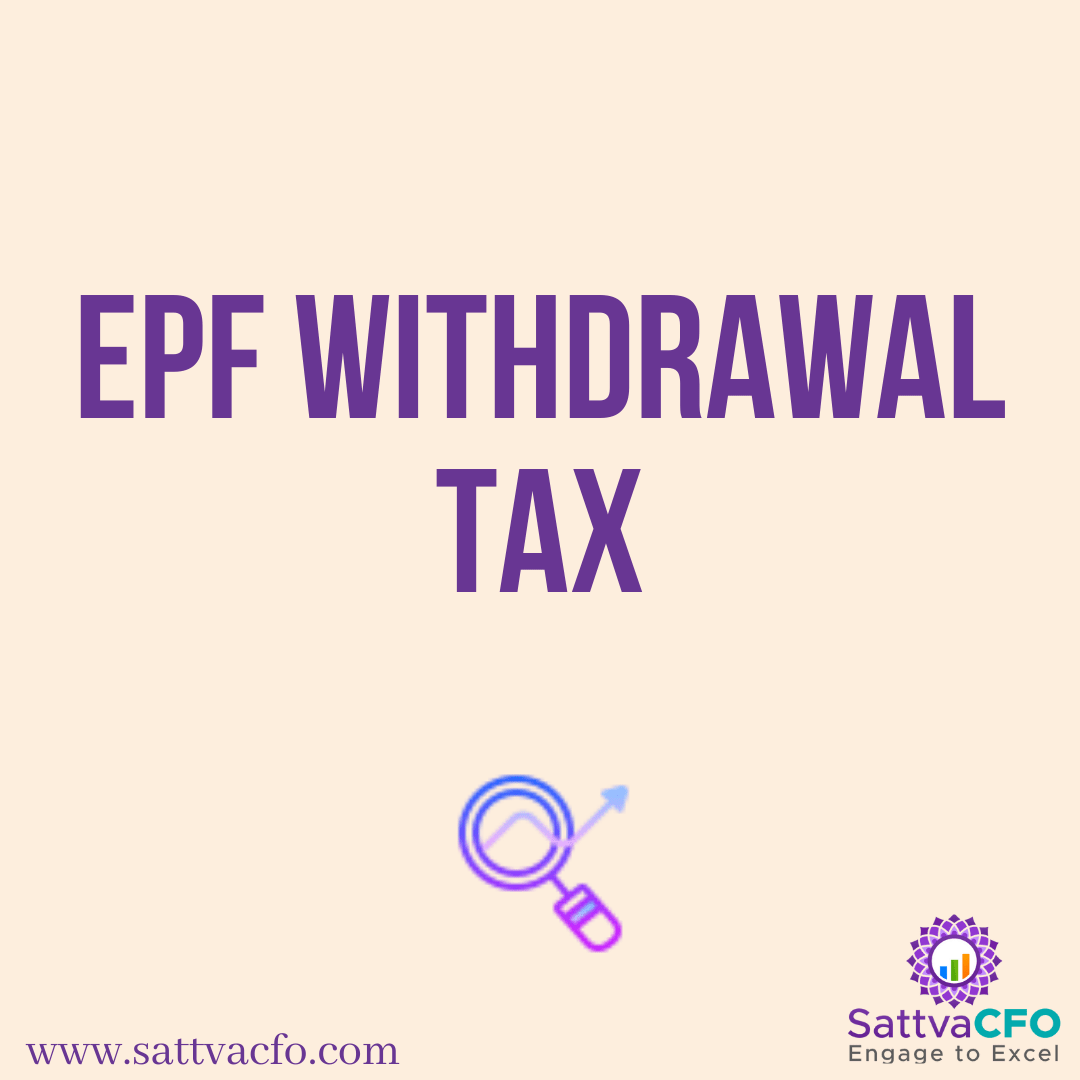EPF Withdrawal – Income Tax & TDS
A Provident Fund is a government-managed, mandatory retirement savings scheme. Articles discuss on EPF Withdrawal – Income Tax Section 192A & TDS and Inactive EPF account.
Table of Contents
In my ITR, where can I show 192A income?
The contribution of the employee is tax-deductible under section 80C. If you have made a withdrawal from your EPF account, you must declare it by selecting ‘Section 10(12) Recognized Provident Fund’ out of the drop-down option. However, only once you have completed five years of service will you be able to transfer money from your PF account tax-free.
Income Tax on EPF withdrawal
The income tax payable on EPF withdrawal is as follows:
Employee’s contribution
This is the amount contributed by employees. This portion of your withdrawal is not taxable.
Interest on Employee’s Contribution
This is the amount of interest earned on employee’s contribution. This portion is taxed under the head ‘Income from Other Sources’.
Employer’s contribution and interest on employer’s contribution
This is the amount contributed by employer and interest earned on such employer’s contribution. This portion is fully taxable. It is taxed under the head ‘Income from Salary’ in your Income Tax Return.
Rate of TDS on EPF withdrawal u/s 192A
TDS is deducted @ 10% on EPF balance if withdrawn before 5 years of service.
However, one must note that if an employee is unable to provide PAN, then the entrusted entity deducts TDS at the marginal rate.
Withdrawal of EPS before five years.
Zero TDS is charged if you transfer your EPF amount from an old employer to a new employer and have worked for the new company for at least five years. Beware that you should always compute the exact five years; if you are off by a few days, you will be penalized.
What are the Withdrawal regulations in the EPF that have been updated?
For EPFO members who have been badly affected by the second phase of the Covid-19 epidemic, the EPFO has modified the PF withdrawal criteria for non-refundable advance. EPFO users can now withdraw up to three months’ basic pay + Dearness Allowance or 75% of their net PF balances, whichever is smaller, under the new regulation.
EPFO members who took advantage of the PF’s non-refundable advance during the first wave of the Coronavirus outbreak are also eligible for the PF’s non-refundable advance.
How much is the employer’s contribution to EPF?
Both You and your employer must contribute ten or twelve percent of your basic income to the EPF. For the first three years, if you are a woman, you have to contribute 8% of your basic wage. Your employer’s EPF contribution will continue at 12 percent during this time.
Who is eligible for an EPF?
Every paid individual with a monthly salary of less than 15,000 INR is required to join the EPF. If the Assistant PF Commissioner and the employer agree, an employee with a monthly income of more than INR 15,000 (the present mandated maximum) is entitled to join the EPF.
What is the EPFO portal’s E-sign?
Many vital activities, including KYC attestation and transfer claim attestation, are completed online utilizing digital signatures or Aadhaar-based e-Sign on the EPFO platform by authorized people of the company. This provides members with a consistent online experience.
What happens to an inactive EPF account?
When an employee quits from work after reaching 55, migrates abroad permanently, or dies, and an application for withdrawal of his accrued balance is not submitted within 36 months, his PF account becomes an “inoperative account” therefore does not collect any additional interest. The interest on the PF fund will continue to accumulate until that time comes. When the account becomes inactive, however, zero interest will be paid.
FAQs on EPF Withdrawal – Income Tax & TDS
What is section 192A of the Income Tax?
Section 192A of the Income Tax Act, 1961 deals with the Tax Deducted at Source (TDS) on the withdrawals of the Provident Fund.
Income Tax Section 192A
After section 192 of the Income-tax Act, the following section shall be inserted with effect from the 1st day of June, 2015, namely:
“192A. Payment of accumulated balance due to an employee.—Notwithstanding anything contained in this Act, the trustees of the Employees’ Provident Fund Scheme, 1952, framed under section 5 of the Employees’ Provident Funds and Miscellaneous Provisions Act, 1952 (19 of 1952) or any person authorised under the scheme to make payment of accumulated balance due to employees, shall, in a case where the accumulated balance due to an employee participating in a recognised provident fund is includible in his total income owing to the provisions of rule 8 of Part A of the Fourth Schedule not being applicable, at the time of payment of the accumulated balance due to the employee, deduct income-tax thereon at the rate of ten per cent. :
Provided that no deduction under this section shall be made where the amount of such payment or, as the case may be, the aggregate amount of such payment to the payee is less than thirty thousand rupees:
Provided further that any person entitled to receive any amount on which tax is deductible under this section shall furnish his Permanent Account Number to the person responsible for deducting such tax, failing which tax shall be deducted at the maximum marginal rate.”.
Also read:





Leave a Reply